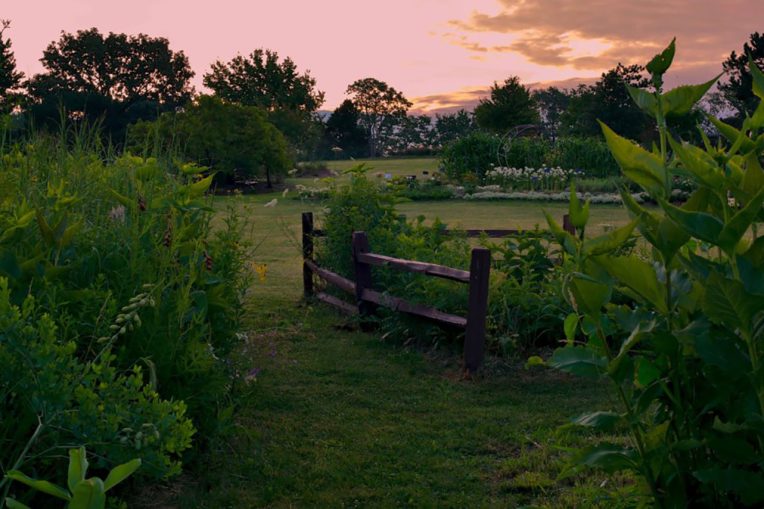Sunset on the Longest Day: An Act of Indigenous Restoration is a free, outdoor community performance event centered around listening to Native Americans as a reconciliatory act of land acknowledgement presented in collaboration with the Illinois State University Horticulture Center.
The performance will be at 7:30 p.m. Wednesday, June 21, 2023, at the ISU Horticulture Center on Raab Road, across from the Corn Crib Stadium, in Normal. The performance lasts one hour, ending at sunset. Smores and lemonade for the community follow the performance.
Created by the School of Theatre and Dance’s Dr. Shannon Epplett, Sunset on the Longest Day will also serve as the groundbreaking for the work of Wonsook Kim School of Art member Ruth K. Burke. Burke’s large scale, in-progress earthwork, Domestic Rewilding, is a Living Land Acknowledgment. The earthwork uses native prairie plants and is being fabricated by interspecies labor.
“Land acknowledgments have become commonplace,” said Epplett, an enrolled member of the Sault Ste. Marie Tribe of Chippewa Indians, who added these statements namecheck the Native peoples displaced from the land occupied by an institution or organization. “As statements of fact, they often historicize the impacted people and dissociate the present from any responsibility for the past, as well as fail to account for contemporary Native people.”
Epplett noted if acknowledgements are not accompanied by actions that move toward restoration, reparation, and reconciliation between Natives and settlers, “land acknowledgements exist as collections of words on paper that accomplish nothing,” he said. “Listening to and hearing the harm that has been caused is a step toward reconciliation.”
Sunset on the Longest Day will be performed by eight Native people from Central Illinois and feature the music of Chicago-based Native American flute player William Buchholtz Allison. “It is intended as an act of communal attention to what contemporary Native community members think and feel about their personal and tribal histories, identities, experiences, and futures,” said Epplett.
Sunset on the Longest Day is partially supported by a grant from the Illinois Arts Council Agency, with additional support from Illinois State’s School of Theatre and Dance, the Office of the President, and the Department of Sociology and Anthropology.
About the work:
The piece is eight Native people surrounding a bonfire. Each performer holds a pad of paper; each sheet of paper contains a single word, which together form phases that change throughout the piece. As the performers tear off the top sheet and throw it into the fire, new phrases are revealed: such as “We are still here,” “We have already survived an apocalypse,” and “Our existence is resistance.” The signs alternate with short spoken sections. Each person in the circle speaks in answer to a question, such as “Who are your people?” “What happened to them?” “Where did they go?” “How are they now?” The questions are unspoken: these are the things that no one is asking of Native Americans.
The piece ends with an invitation to the viewers to “Watch the sun set on the longest day.” Performers and spectators then watch the sun go down together, as Burke and her team of oxen break ground on the Domestic Rewilding sculpture. Once Native people have spoken, and non-Native people have heard, we can be in community with one another and watch the sun set together, in the hope of a better future. For the viewers, it will not be possible to remain stationary and “see” the piece—the spectator’s movement around the circle of performers is part of the work, enacting the encroachment and menace of the colonial encounter for Native people.
If you go:
- Sunset on the Longest Day is free and open to all. Viewers are welcome to bring chairs and blankets, but the work is best experienced by standing and walking around the performers.
- The piece will begin at 7:30 p.m. and lasts approximately one hour.
- Parking will be available on the site, located on Raab Road, .2 miles west of the ISU Horticulture Center main entrance. Additional parking will be available at the Horticulture Center lot.
- Accessibility: the site is an unpaved field. Fire will be used in the performance. Sunscreen and insect repellent are recommended.
For more information, please contact Shannon Epplett at drshannonepplett@gmail.com, or 773-865-0459.


